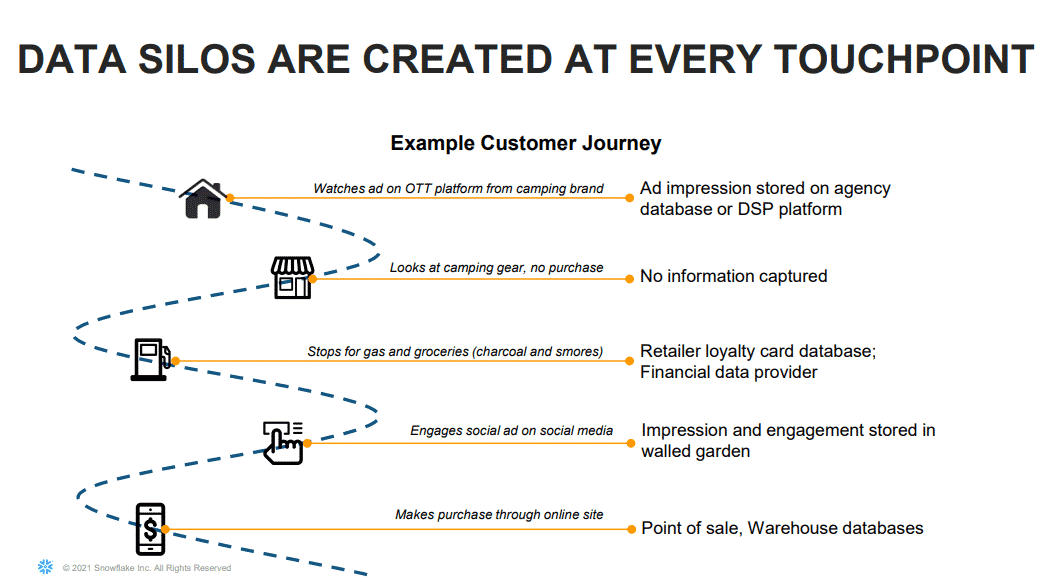Uncategorized
Transforming your organization to activate customer data
In a new article on Martech.org, Snowflake’s Ganesh Subramanian maps out your organization’s marketing analytics maturity curve.

“Often organizations are using a one-size-fits-all approach of sending out the same message to everyone,” said Ganesh Subramanian, Director of Product Marketing for cloud data company Snowflake, at our recent MarTech conference.
Businesses that get stuck in this rut aren’t leveraging the data they have, which means they have to pull it together and also put it to good use in messaging and experience. They haven’t transformed. There are some common stages all organizations take to consolidate their data and make it actionable, according to Subramanian.
Make data a priority. First, organizations need to make data a priority. Think in terms of the different kinds of data and how they come into your organization. First-person, second-person and third-person data are all actionable, and they should also be accessible within your org.
Storing data centrally. “Choose a platform that can scale, and one that you don’t need to rip and replace every couple of years, but one that will enable you to drive that marketing outcome over time,” said Subramanian.
Sharing data. Ditch the start-and-stop mentality that stalls data in its separate places, keeping it from being activated. Data should always be moving. It should be live. “Think about data sharing as the future of how you want to leverage data,” Subramanian explained. “It’s no longer about managing these API’s or copying data and storing it separately and uploading it. The future is all about enabling access to this live data across sources.”
Good centralized, accessible data should lead to marketing insights, but it’s a process. Subramanian maps this out into a marketing analytics maturity curve that he finds most organizations follow. “Most organizations start with a customer 360 view, but really it’s about thinking about what you want to accomplish next and adding to that 360 degree view In a single query-able location,” Subramanian said. “Often, the next step is then looking at your marketing spend and understanding again, which half is less effective and which half is more effective,” he stated. “Just piping in a couple new channels can help improve your overall analytics in your ability to make better decisions, which then leads you to a better understanding of your customers,” he added.
Having data to support engagement across different channels can drive revenue. It can also make spending by your business more efficient. “Ultimately, as you go back and forth across these stages, you achieve the vision of data science where now you’re programmatically predicting where the next dollar should be spent and the impact of that dollar across channels and marketing campaigns,” said Subramanian.


